Hot Rod History: Where did the Hot Rod come from?

What is a hot rod? Why were they called hot rods?

The hot rod is a staple of American history. Often called a street rod, a hot rod is a classic American car with an oversized engine modified for speed. It is this powerful engine that gave the hot rod its name. The term “rod” comes from the connecting rods in the high-power, or “hot,” engine. And so, the name hot rod stuck.
According to Rodster.com,
the original idea behind the hot rod was simple:
And there you have it. In just a few short steps, a hot rod could be modified from a traditional vehicle and molded into something unique—a street rod ready for fast-paced street action.
In that sense, a hot rod was “every man’s car.” It was cheap to make, easy to come by, and performed better than most cars on the market at the time.
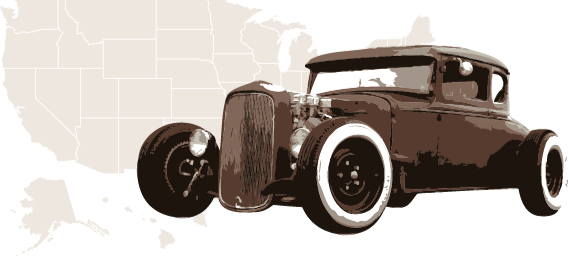
The hot rod reached its height in
popularity in the 1930s and 1940s
A custom, souped-up car became the norm on almost every street throughout the US. Hot rodding or street rodding was a fun American pastime. Street rodding was a quintessential rite of passage among the younger generations as it celebrated what America was all about—unconventional self-expression, breaking societal rules, and good, clean fun.

Instances of early hot rods can be traced back to the Great Depression, first called soup-ups or gow jobs. The hot rod was a major attraction during such dire times when car lovers had almost no money to spare. Instead of purchasing a brand spanking new vehicle, enthusiasts would tinker with old cars and pieces of machinery to create a custom soup-up all their own. Early rodders had another motivation that went far beyond an appreciation for fine machinery.
Since classes were separated so drastically in the Depression, poor hot rodders used their custom creations to prove a point to the wealthy elite.
The ability to spend money on a classy automobile wasn’t the only way to achieve status; a hot rod could be created and customized with two hands to provide even more superior power and performance. Just as much as the hot rod was a hobby and pastime, it has also been a social statement as far back as the 1930s.
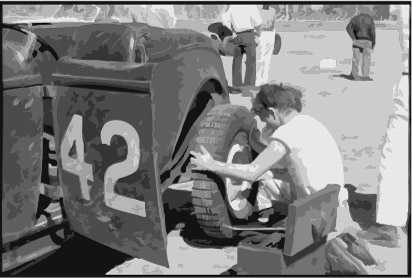
After soup-ups gained notoriety following the great Depression, hot rod popularity soared in California. Most classic car buffs consider California to be the birthplace of the hot rod.’ The reason? In California in the 1930s, a person was likely to find large numbers of backyard mechanics working out of their own hot rod shop.
These down-home tinkerers spent their free time working with machinery and auto parts gleaned from junkyards. Extra parts and loose ends were deconstructed and reconstructed to craft high-quality racing cars that weren’t available on the traditional auto market.
The traditional auto market at the time offered vehicles like the Ford Model A and Model T Roadsters.
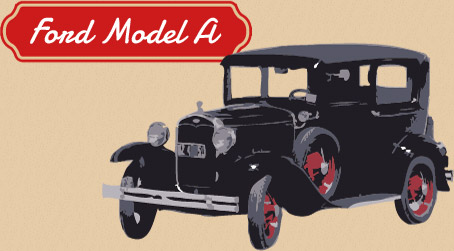
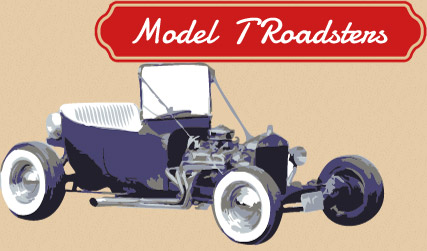
These mass-produced cars were broken down and rebuilt to make custom hot rods for street racing. The initial breakdown removed what hot rodders considered to be “unnecessary parts,” like windshields, fenders, running boards, and ornaments. The motivation in stripping the vehicle served to reduce unnecessary weight and support aerodynamics.
Then, the soup-up began. Hot rods were rebuilt with large rear tires to increase speed by raising the gear ratio; normal street tires often remained on the front wheels to cut down on wind resistance.
Hot rodders took aerodynamic customization seriously—by cutting rows of louvers, or slots, into the body, hood, and rear deck of a car to ensure efficient engine cooling and circulation when driving at a high speed.
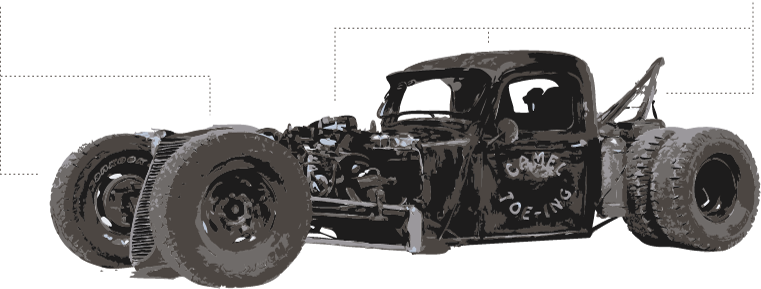
Hot rod popularity surged as a backlash against the upper class in the Great Depression. By the time World War II came around, servicemen throughout the country were forced to leave their soup-ups behind for a time. When the war ended in 1945, hot rodding was back with a vengeance. It quickly became one of the most widespread postwar trends in America.
Hot rod popularity has had its ups and downs, depending on the economic state of the nation.
The term hot rod was used to describe a souped-up vehicle until the 1970s.
In the 70s, hot rodders made an effort to change their reputation to gain respect for their customization of high-performance automobiles. It was at that time that the term “street rod” was introduced—to separate street rodding as a high-quality, family-friendly sect of the hot rodding counterculture.
How much do you know about classic street racers?
Here are 10 fun facts about the American hot rod:
1.
Cheap Ford Flathead V-8 engines were the most popular soup-up choices in 1932.
2.
1930s hot rod modifications could soup up an engine to perform at over 100 miles an hour.
3.
1940s hot rod activities were frowned upon by the general public and associated with juvenile delinquency.
4.
The first Hot Rod Exhibition took place in Los Angeles at the National Guard Armory in January 1948; 10,000 people attended this famed event.
5.
Custom car artwork peaked in the 1940s to include detailed scallops, pinstriping, and flamework.
6.
The 1950s drag racing tracks were up to 1 mile long with four lanes for racing.
7.
The National Hot Rod Association was founded in 1951.
8.
Hot rodding popularity dipped in the 1980s, although several underground “rebel groups” continued to champion the cause.
9.
“Show rods” are created to compete in national car shows, like the Detroit Autorama; they require great care and investment in their handiwork.
10.
Hot rod culture is still alive and well with a following in the US, the UK, Australia, Sweden, and Canada.
Today, modern rodders are divided by preference as street rodders or hot rodders—hot rodders rebuild with original equipment from old parts, while street rodders customize with new parts.
The love of the hot rod is once again at its peak, embraced by auto enthusiasts and those nostalgic for the “good old days.” Yet for many hot rodders, the love of the street race never died. It remains synonymous with authentic American culture and work ethic—getting your hands dirty, creating something from nothing, and transforming the conventional into a unique work of art.

Hot rod history has unfolded with burgeoning American culture. Many hot rodders consider souped-up classic cars to be as “American as apple pie.”
Delving into the rich history of the hot rod decade by decade gives a glimpse into the evolution of custom cars and street racing. Here’s where it all began:
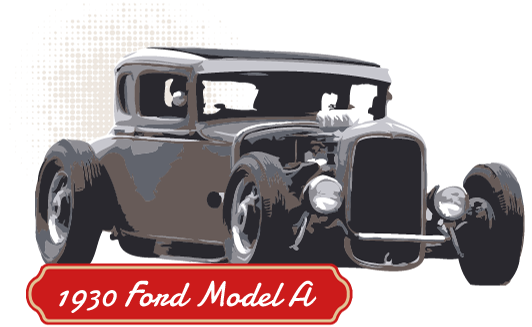
1930sClose to a quarter of America was unemployed in the Great Depression; consequently, most people couldn’t afford a new car. The refurbishing and engine swapping of old cars began using junkyard parts. The hot rod was born when factory cars were stripped of their non-essential features to improve performance.
Hot Rod Highlight: Southern California was the hot rod hotspot of the decade. SoCo became the home of custom car competitions.
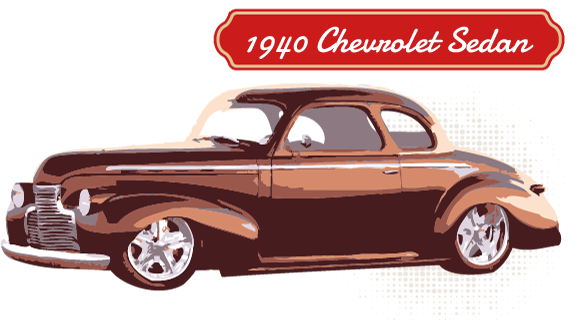
1940s
Hot rodding hit a slump during World War II when young men throughout the US were drafted. To make matters worse, gasoline was rationed, while auto manufacturers began to produce Army planes and tanks instead of consumer vehicles. Custom car crafting soared again in popularity in 1946 when men returned home from war and the baby boom began. In the 40s, the public looked down on the hot rod scene as street racing was associated with injuries and deaths.
Hot Rod Highlight: The first low-rider hot rods using hydraulic lifts were introduced in the barrios of Los Angeles.
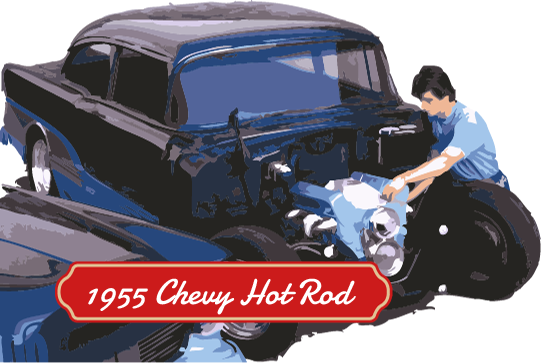
1950s
Hot rod popularity continued to rise, supported by the formation of the National Hot Rod Association in 1951. Hot rodders moved to custom-made drag strips and avoided public roads. The hot rod culture branched out into several subcultures—including street rods for illegal street racing, dragsters for drag track racing, and custom cars with elaborate cosmetic upgrades.
Hot Rod Highlight: Hot rodders became associated with a controversial music genre called rock and roll, further adding to their rebellious reputation.
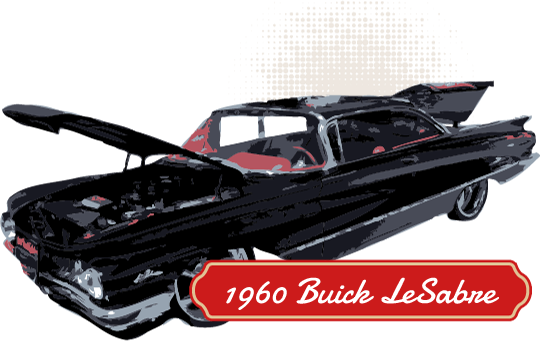
1960s
The hot rod community gained official recognition after the first muscle cars were introduced by Detroit Motor City, along with smaller pony cars like the Ford Mustang. Different custom car prototypes began to make waves in the drag racing circuit—also called “funny cars” because of their odd appearance. Funny cars were unique in their modifications and were crafted to vaguely resemble manufacturer showroom models. Some early prototypes moved rear wheels forward to impact weight distribution and offer better acceleration and speed, changing the look and feel of the car entirely.
Hot Rod Highlight: Toymaker Mattel jumps on the hot rod trend by introducing the first Hot Wheels die-cast cars in 1968; Hot Wheels would eventually become one of the top-selling toys in history.
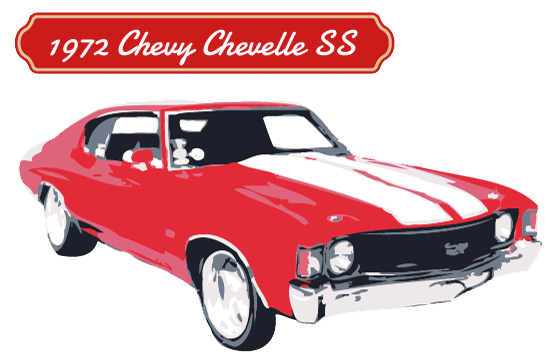
1970s
Gas shortages triggered by OPEC oil embargoes put a cramp in the love for hot rodding. Hot rodders took this opportunity to “shift gears” by changing their focus from speed and acceleration to an elaborately customized interior and exterior. In a pushback against the ultra-custom street rod movement, rat rodders emerged; these enthusiasts continued to focus on vintage vehicles from the 1920s to 1940s by rebuilding raw hot rods without embellishments.
Hot Rod Highlight: The movie American Graffiti glamorized a love of all-American street rodding in 1973, followed by Grease in 1978.
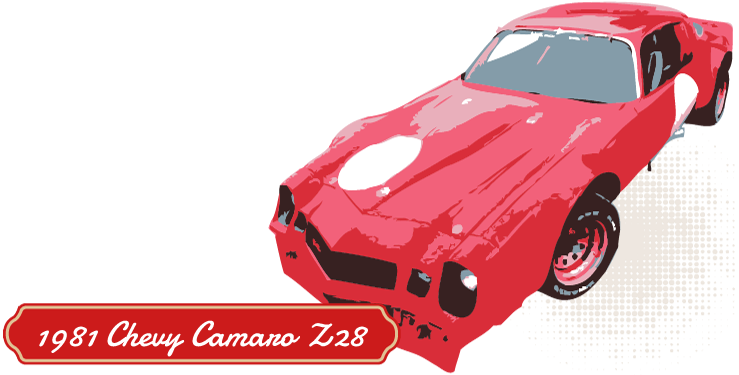
1980s
Amateur hot-rodding once again slumped in popularity, but the culture didn’t die out completely. Hot rodding enthusiasts fell into one of two groups: Those focused on preserving the nostalgia of iconic America in the 1950s, and those that pushed the rebellious counterculture centered on custom vehicle design in hot rodding communities.
Hot Rod Highlight: Diehard hot rodders began to take their craft seriously; a devoted craftsman made car customization a legitimate hobby by spending thousands of dollars to turn a classic car into a work of art.
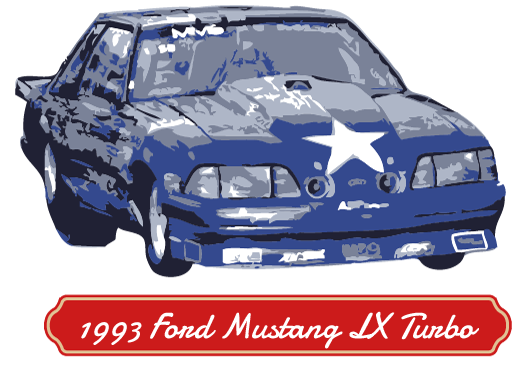
1990s
Hot rods were king again when followers decided to bring the movement back to the “good old days.” Re-creations of home-built soup-ups hit the streets. The idea of the backyard hot rod shop had returned and these magnificent vehicles became symbols of American creativity and ingenuity. Hot rod throwbacks began popping up on fan magazine covers and at car shows across America. Hot rod creations were once again simplified without artistic or elaborate custom embellishments. Most rebuilt hot rods were painted in red or gray primer without a topcoat. Instead of a smooth, sleek, like-new finish, rust and dents were preferred to invoke the true authenticity of America’s first souped-up motorized vehicle.
Hot Rod Highlight: In the 90s, the grassroots following of the early hot rod culture attracted an even younger generation of classic car lovers. New hot rodders pushed the envelope and took the philosophy to the extreme by dressing and acting the part—greased hair, retro clothes, and 1950s music.
2000-Present
In the present day, the love for hot rodding has yet to wane. The Discovery Channel created a media storm around the hot rodding community when American Hot Rod aired in 2004.
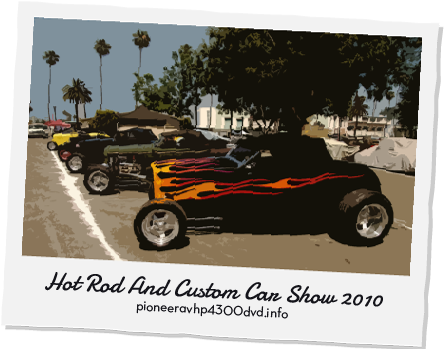
Hot rodders continue to gather throughout the US to show off their latest custom creations in local car clubs and street rod community events. The hot rodding lifestyle of the 1990s remains strong among followers of the traditional hot rod culture, often called greasers. Greaser communities embrace the throwback trends of the 1950s and all aspects of hot rodding—to include street rod builders, artists, and collectors.
Hot Rod Highlight: Popular contemporary TV shows that celebrate the hot rod culture include American Hot Rod, Chop Cut Rebuild, Horsepower TV, and My Classic Car.
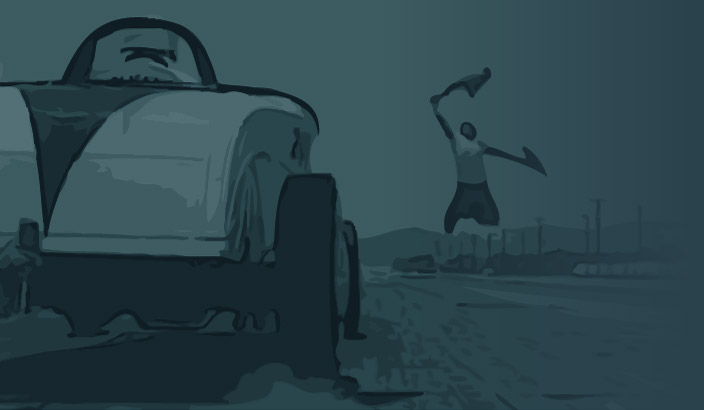
What’s the attraction to the hot rod scene
that continues to grow decade after decade?
Many hot rodders simply call it an American love affair. The biggest boom of the hot rod in the 1950s was synonymous with a time of great prosperity in our nation and return home from war. Custom cars and hot rods embodied the freedom of the American spirit and were embraced by iconic rebels like James Dean. Classic hot rod culture today refuses to forget its roots. The good old days, when America was at its best, are at the foundation of the modern hot rod lifestyle.
“Aerodynamics are for people who can’t build engines.” – Enzo Ferrari
A Buyer’s Guide for

If you’re ready to join the hot rod world, what are you waiting for? The love for the hot rod is as much about community as it is about the car. Hot rodders attend local events and compare notes with other collectors. Hot rod lovers spend their spare time souping up, customizing, and rebuilding. Hot rod communities are broken down further into specialty subcultures that will suit almost any taste—whether a street rod, custom hot rod, or vintage gow job strikes your fancy.
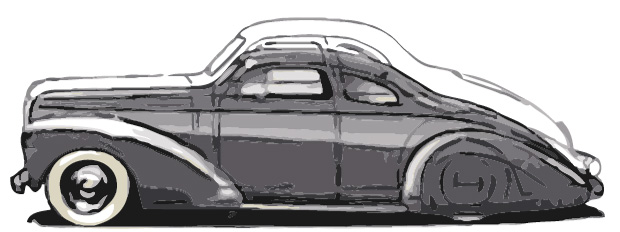
If you’re ready to invest in a custom car or rebuild a hot rod yourself, here are a few tips to get you started:
Decide if you’ll buy finished or customize yourself.
For some hot rodders, customizing and rebuilding is all of the fun. Others prefer to tour car shows and buy street rods fully built out with the potential for upgrades and embellishments.
Set your budget.
If you’re going to build your own hot rod, you may decide to start out with a cheap classic car and scavenge for parts to keep your budget low. On the higher end of the spectrum, specialty street rods with elaborate customizations can cost thousands of dollars.
Weigh power versus usability.
A hot rod with a loud, built-up engine may be impressive at a car show, but it might not get you home in one piece. If you plan to drive your classic car regularly and attend neighborhood events, make sure the car is built for quality, as well as performance.
When it comes to investing in your first hot rod, there’s much more to the picture.

First, you’ll have to invest in the cost of the car, which could range from a few thousand dollars to as much as $120,000 for a custom vehicle. If you plan to drive your car as opposed to keeping it in a garage, you’ll also be responsible for taxes and insurance. Specialty insurance may be needed for a custom-built car with antique and modified parts. Planning, researching, and prepping are key to ensure your money is well spent.
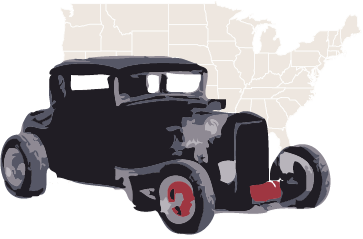
Once you’ve gotten your hot little hands on a soup-up, it’s time to take it to the streets.
Hot rod events and happenings occur regularly in local communities throughout the US. Some of the big-name national car shows include Detroit Autorama, America’s Most Beautiful Roadster, and the Street Rod Nationals sponsored by the largest hot rod club in the US, the National Street Rod Association.
If you take anything away from this article, we hope you understand that a hot rod is much more than a vehicle to get you from point A to point B.
The classic hot rod embodies authentic American culture. Some enthusiasts make customizing a well-crafted hot rod their life’s work. A street-legal dual-purpose car is unlike anything you’ll ever see in a dealer’s showroom. But don’t take our word for it—get behind the wheel and see for yourself.
